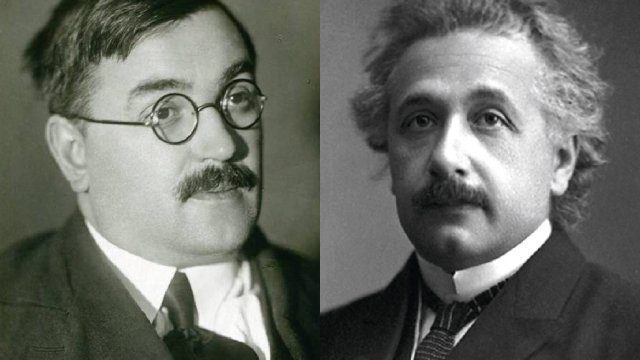Official:
Sir Humphrey Davy. December 17, 1778 – May 29, 1829. British chemist, agrochemist, physicist and geologist, one of the founders of electrochemistry. Member of the Royal Society of London, foreign honorary member of the St. Petersburg Academy of Sciences. Discoverer of elements and Faraday.
Life and Work:
1.
Sir Humphry Davy
Abominated gravy.
He lived in the odium
Of having discovered sodium.
The English humorist Edmund Bentley is right, but not quite: in addition to sodium, Davy discovered potassium, calcium, lithium, obtained metallic barium, and an amalgam of strontium and magnesium.
2. The list of Davy’s achievements is long: the president of the Royal Society of London was one of the founders of electrochemistry, obtained hydrogen and oxygen by electrolysis, and described the electric arc. He designed and patented a safe mine lamp, or Davy lamp, where the lamp flame is surrounded by a grill. He discovered or was the first to obtain a plethora of chemical elements and substances, but he considered Michael Faraday to be his key discovery.
3. The encyclopedias call Humphrey Davy the first baronet, and it is true: he received the title not by birth, but for scientific achievements. His origin was very modest: a woodcarver from the small town of Penzance in the south-west of England could hardly give his son anything but a basic education and a loaf of bread.
4. “Learning naturally is a true pleasure; how unfortunate then it is that in most schools it is made a pain,” Davy later wrote, “I consider it fortunate that I was left much to myself as a child, and put upon no particular plan of study... What I am I made myself.”
5. As a result, it was Davy’s godfather, who later became his guardian, paid for the Truro Grammar School. Later, one of its teachers admitted, “I could not discern the abilities which made him so distinguished later.”
6. After his father’s death, the teenager was sent to the surgeon for training, and then to the apothecary. That was where Davy started to practice his favorite chemistry. He conducted his first chemical experiments in his guardian’s house attic. The family was indignant: “This boy Humphrey is incorrigible. He’ll blow us all up.” And the elder sister complained that the chemicals were ruining her dresses.
7. At the same time, the apothecary’s student studied foreign languages on his own.
8. Amazingly, by the age of 20, the self-taught chemist’s reputation was so high that he was invited to the Pneumatic Institute, a medical research center in Bristol.
9. At the Pneumatic Institute, Davy took charge of a laboratory where he experimented with nitrous oxide, discovered by Priestley earlier. Davy called it laughing gas for its intoxicating effect. He also described the analgesic effect of the gas, but it did not occur to the scientist to use it for anesthesia. Which is surprising for an apprentice surgeon!
10. The talented scientist did not stay at the Pneumatic Institute long. Already in 1801, he was invited to the Royal Institute, and a year later, the self-taught man without a university education became a professor there.
11. One day, a young bookbinder’s apprentice, Michael Faraday, attended a public lecture Professor Davy delivered at the Royal Institute. He wrote down four lectures in detail, bound them up, and sent them to Davy with a request to take him to work at the Royal Institute. This, as Faraday himself put it, “bold and naive step” led to success. In early 1813, Davy invited Faraday to fill the vacant position of laboratory assistant.
12. Experiments on obtaining metals had dire consequences for the scientist. Once, molten potassium came in contact with water, which produced an explosion that made Davy’s right eye go blind. Experiments with nitrogen trichloride also damaged his vision severely, so Michael Faraday often acted as the teacher’s secretary.
13. In 1812, at the age of 34, Davy was knighted for his scientific work. This, as well as his declining health, interrupted his work in science and in the Royal Society. A year later, he went on a two-year trip across the scientific centers of Europe.
14. By the beginning of the 19th century, the booming English industry was screaming for coal. Mine owners would be happy to deliver, but they could not produce more – it was dangerous. Humphrey Davy investigated the problem, and on October 31, 1815, patented a safe mine lamp, or Davy lamp, where the lamp flame was surrounded by a grill. It let the light pass, but prevented explosions or fires to spread throughout the entire mine.
15. We know Davy the scholar, but not Davy the poet. Nevertheless, he is considered a member of the so-called Lake School and his contemporaries valued his poems highly. And we do not know Davy the artist either, although three of his paintings found their place in the art gallery of his native Penzance.
16. In 1827, Humphrey Davy resigned his position as president of the Royal Society and went to Italy to improve health. The scientist had been to Italy before: he conducted chemical research of paints used in ancient painting; in Naples, he studied Herculaneum scrolls and suggested a way to unfold them without destroying. But this trip was fatal: on the way back to England, Davy had a stroke and died in Geneva.






















